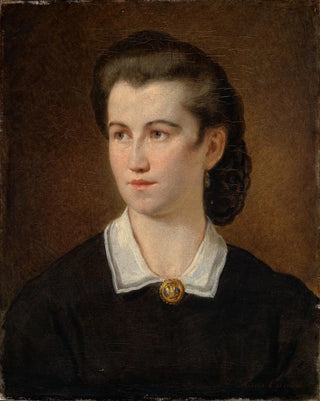Art print | Portrait of a young girl - Hans Canon


View from behind

Frame (optional)
In the world of art, some works manage to capture the very essence of humanity, transcending eras and styles. The "Portrait of a Young Girl" by Hans Canon is a striking example. This piece, both delicate and powerful, transports us into a universe where beauty and sensitivity meet. The young girl, whose gaze appears both dreamy and penetrating, invites the viewer to reflect on her thoughts and emotions. Through this portrait, Canon succeeds in establishing an intimate connection between the subject and the observer, an aesthetic experience that cannot leave one indifferent.
Style and uniqueness of the work
Hans Canon's style is distinguished by his ability to combine realism and sensitivity. In "Portrait of a Young Girl," every detail is carefully crafted, from skin nuances to the reflections of light in the hair. The artist skillfully plays with shadows and highlights, creating an almost tangible atmosphere. The background, subtly blurred, highlights the central figure, while adding depth that invites the viewer to explore every corner of the canvas. The young girl's posture, slightly tilted, suggests fragility and introspection—themes dear to Canon, who strives to capture not only appearance but also the soul of his subjects. This portrait, both intimate and universal, demonstrates undeniable technical mastery while conveying an emotion that resonates deeply within each of us.
The artist and his influence
Hans Canon, an Austrian-born painter, is often regarded as a master of portraiture. His career, rich in experiences and encounters, allowed him to develop a unique style that blends tradition and innovation. Influenced by the great masters of painting, Canon was able to bring his own vision, marked by modern sensitivity. His works, often populated with female figures, explore themes such as beauty, melancholy, and the complexity of human emotions. Canon's reputation quickly extended beyond Austrian borders, making him an essential figure of the 19th century. His portraits, including that of the young girl, continue to inspire

Matte finish

View from behind

Frame (optional)
In the world of art, some works manage to capture the very essence of humanity, transcending eras and styles. The "Portrait of a Young Girl" by Hans Canon is a striking example. This piece, both delicate and powerful, transports us into a universe where beauty and sensitivity meet. The young girl, whose gaze appears both dreamy and penetrating, invites the viewer to reflect on her thoughts and emotions. Through this portrait, Canon succeeds in establishing an intimate connection between the subject and the observer, an aesthetic experience that cannot leave one indifferent.
Style and uniqueness of the work
Hans Canon's style is distinguished by his ability to combine realism and sensitivity. In "Portrait of a Young Girl," every detail is carefully crafted, from skin nuances to the reflections of light in the hair. The artist skillfully plays with shadows and highlights, creating an almost tangible atmosphere. The background, subtly blurred, highlights the central figure, while adding depth that invites the viewer to explore every corner of the canvas. The young girl's posture, slightly tilted, suggests fragility and introspection—themes dear to Canon, who strives to capture not only appearance but also the soul of his subjects. This portrait, both intimate and universal, demonstrates undeniable technical mastery while conveying an emotion that resonates deeply within each of us.
The artist and his influence
Hans Canon, an Austrian-born painter, is often regarded as a master of portraiture. His career, rich in experiences and encounters, allowed him to develop a unique style that blends tradition and innovation. Influenced by the great masters of painting, Canon was able to bring his own vision, marked by modern sensitivity. His works, often populated with female figures, explore themes such as beauty, melancholy, and the complexity of human emotions. Canon's reputation quickly extended beyond Austrian borders, making him an essential figure of the 19th century. His portraits, including that of the young girl, continue to inspire






